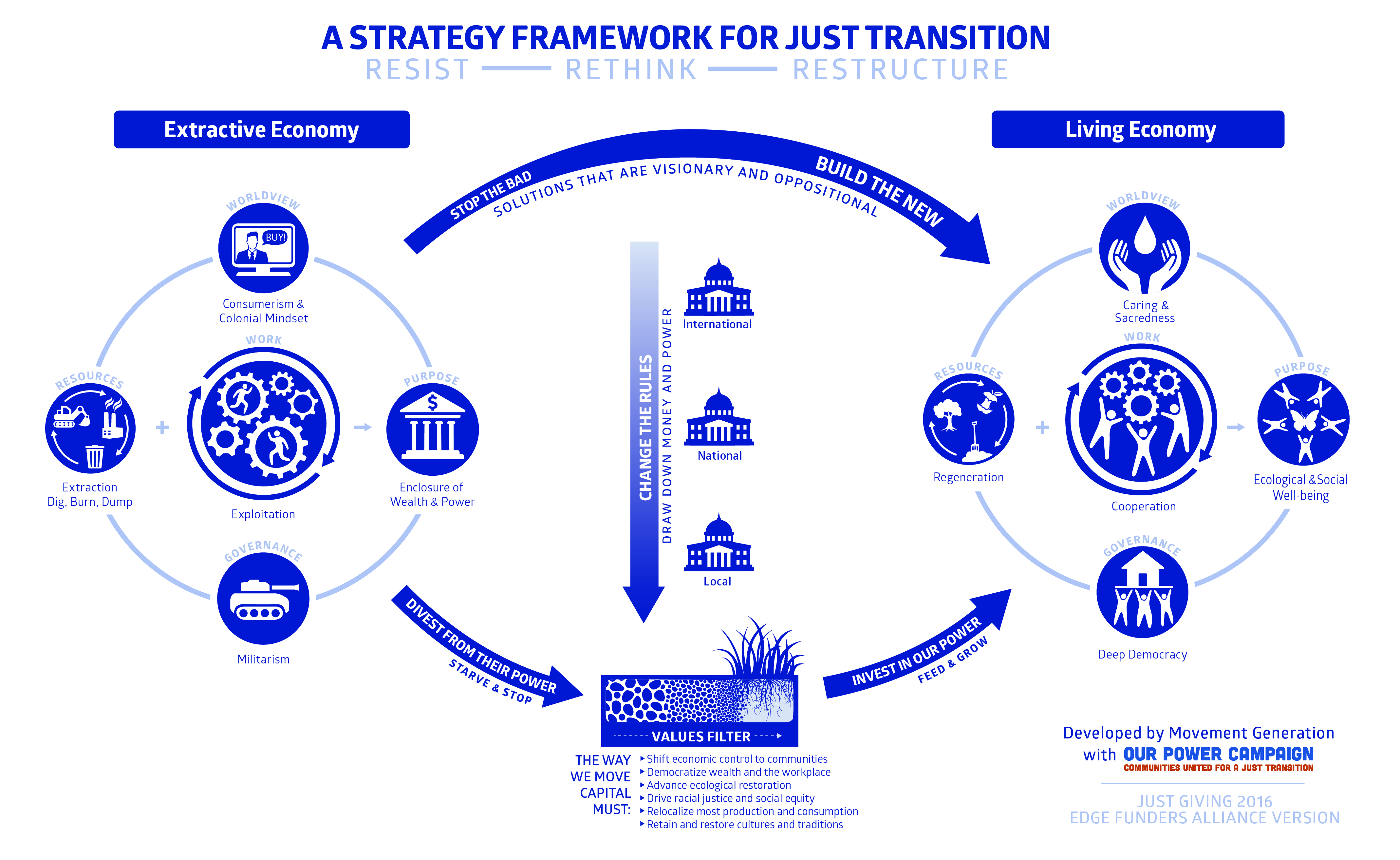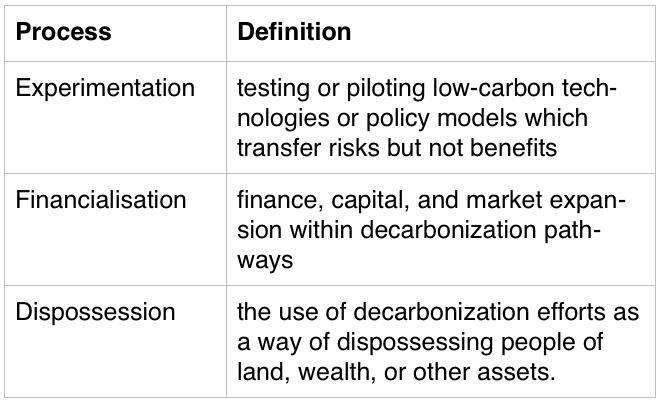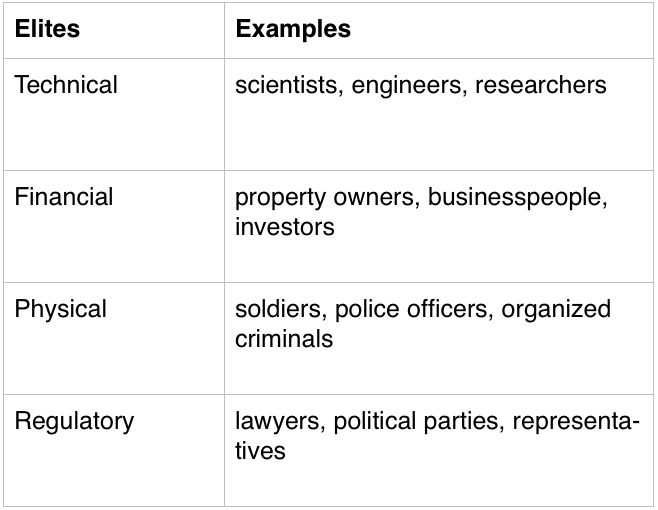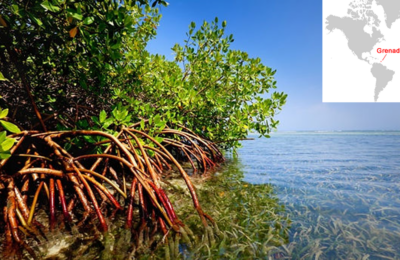A year ago this month, a United Nations climate report recommended revolutionary-scale action by 2030 to avoid catastrophic climate change. A month later, in November 2018, the United States followed with a Congress-mandated Fourth National Climate Assessment outlining the multitude of ways climate change might impact livelihoods in every region of the US.
Since then, a growing number of activists have started to demand decarbonization of our global economic infrastructure as soon as possible. Last month’s global climate protests – which included at least 6 million protesters across 150 countries – demonstrated that communities across the world demand real action to dismantle fossil fuel infrastructures, restore ecosystems, and develop protective measures against climate disasters.
One of the key goals of many climate activists is to ensure a “just transition” through climate policy plans that simultaneously address systemic inequalities and injustice inherent in existing political and economic infrastructures (see Green New Deal).
But what exactly would that look like?

A recent study focuses on how the execution of certain climate mitigation and adaptation initiatives – such as developing coastal protection, implementing climate risk insurance, and investing in renewable energy – are all influenced by elite power structures that seek not only to respond to climate change, but acquire knowledge, wealth, land, or other assets in the process. In doing so, the researchers tease out elite processes in climate initiatives that can perpetuate systemic inequality, exclusion, and injustice.
Elite power structures in climate initiatives: 5 case studies

The study used climate initiatives that took place in 5 different countries as case studies for mitigation and adaptation across diverse technological, geographic, and economic backgrounds. Researchers looked at the development of coastal protections such as seawalls, dikes, and storm surge barriers in Bangladesh and the Netherlands. They outlined the effects of climate risk insurance on local communities in Malawi following a severe drought in 2016. In Mexico and South Africa, they analyzed the influence of renewable energy auctions in local economies and land use.

After conducting a literature review of these case studies, the researchers analyzed the involvement of elites in terms of three processes: experimentation, financialisation, and dispossession (see Table 1). They separated elites into different groups (see Table 2) who they expected to guide and shape climate initiatives on local, national, and transnational scales .
The researchers point out that these definitions are not meant to account for all influencing factors within each case study. Instead, they provide a conceptual framework for understanding the interweaving motivations and processes of elites that underlie the justice elements of climate initiatives.
Elite processes in action
Climate adaptation: coastal protection
Although elite processes and groups have all been defined separately, the researchers note that they often function simultaneously and reinforce one another. For example, the development of the Delta Works in the Netherlands – consisting of dams, dikes, levees, and a host of other technological developments – is considered an engineering feat that has helped protect the Dutch Rhine-Meuse-Scheldt delta from flooding, sea level rise, and storm surge. The researchers point out that the process of scientific experimentation on Dutch land has led to advances in physics, biology, materials and modeling, to name a few, which at the time enhanced environmental risks and dispossessed people of land without having any choice in the matter.
While some technical elites (such as civil engineers) were lauded for their efforts, the viewpoints of ecologists and biologists were often ignored, contributing to significant environmental impacts in the area. Meanwhile, some technical elites (i.e. engineers) gained expertise that has given them global competitive advantage in the construction of flood control structures – that is, the same elite groups who once led the Delta Works now stand to monetize their knowledge.
Similarly, Bangladesh (considered one of the most at-risk countries for sea level rise and cyclones) has become a site of experimentation for coastal protection measures. Bangladeshis can be dispossessed of their land for coastal development, which is often undertaken with inadequate community consent, and sometimes under threat of violence. At the same time, financialisation takes place by market-based incentives offered to local communities – such as the “Triple F” model – which places monetary priorities on the same level as climate adaptation. Here, communities in Bangladesh suffer under the processes of all four elite groups.
Climate insurance
In another case, the researchers looked at the failure of climate risk insurance to benefit Malawi’s population during a severe drought. Risk models were unable to predict the severity of the 2016 drought, leaving local communities – who had paid high premiums – back at square one. This failed experiment exemplified how a poor nation – one that has contributed very little to climate change – can become financially burdened by elite processes in climate initiatives.
Climate mitigation: renewable energy auctions
Lastly, the studies from Mexico and South Africa exemplified elite dynamics in renewable energy auctions, which have become a popular way to boost competition in the global renewables market, especially in developing nations. In both cases, local communities are often given little say in how or where these renewables will be developed. One example is in the attempt to dispossess Mexico’s indigenous communities of their land for wind farm development. In South Africa, while local communities are guaranteed a minimum 2.5% share of renewable energy projects, their participation is seen as an “investment risk,” and the share is often taken over by project developers through community trusts.
Keeping an eye on elites
Although this study focuses on climate initiatives in countries that function differently from the U.S., it proposes an interesting framework for how we can view different types and scales of climate action going forward. We might begin by asking who is in control of these actions, who is benefiting, and who is at risk of losing something. By becoming more aware of the complexities of climate actions, we can take a big step towards a just and equitable low-carbon future.
Edited by Ashley Marranzino.
I’m a PhD student at the University of Rhode Island’s Graduate School of Oceanography. I use a small-scale computer model to study how physical features like surface waves at the air-sea interface produce friction for the wind that can limit momentum, energy, gas, and heat exchange between the ocean and atmosphere. In the future, I hope to learn more about the role waves play in different parts of the world as weather and climate patterns evolve. Also, I love to write.



